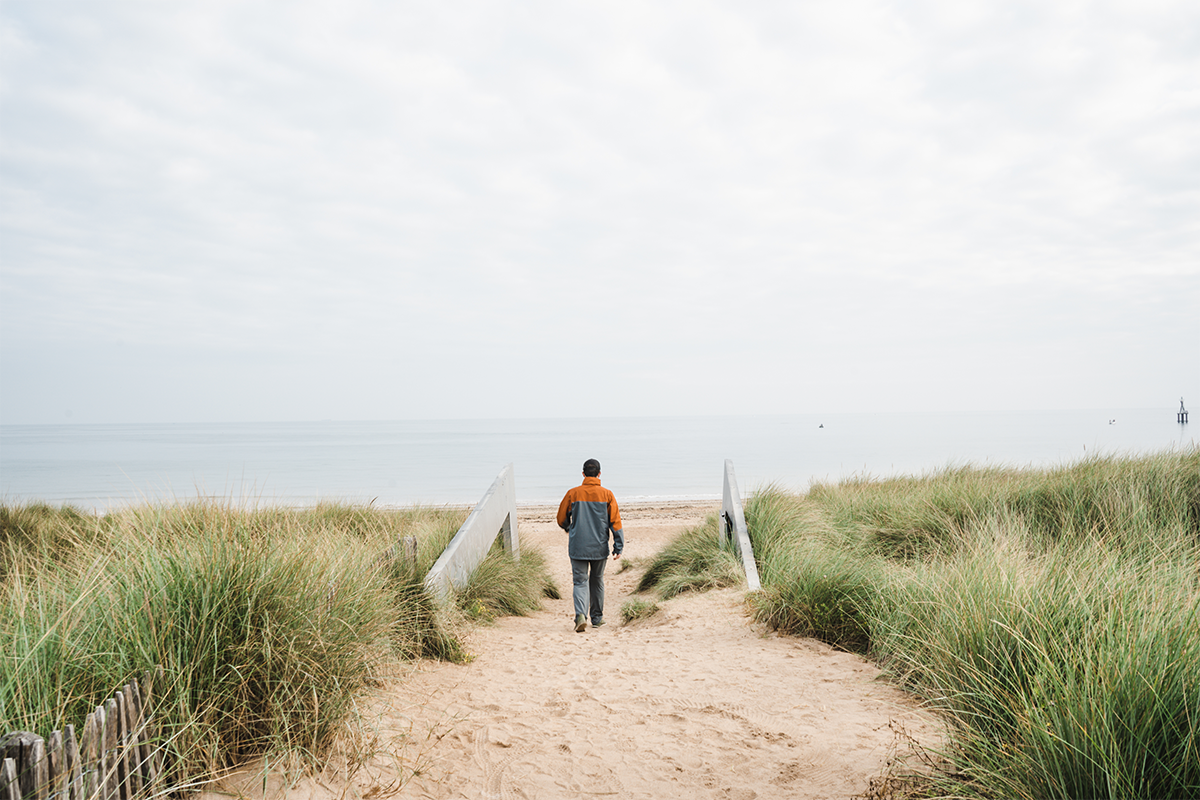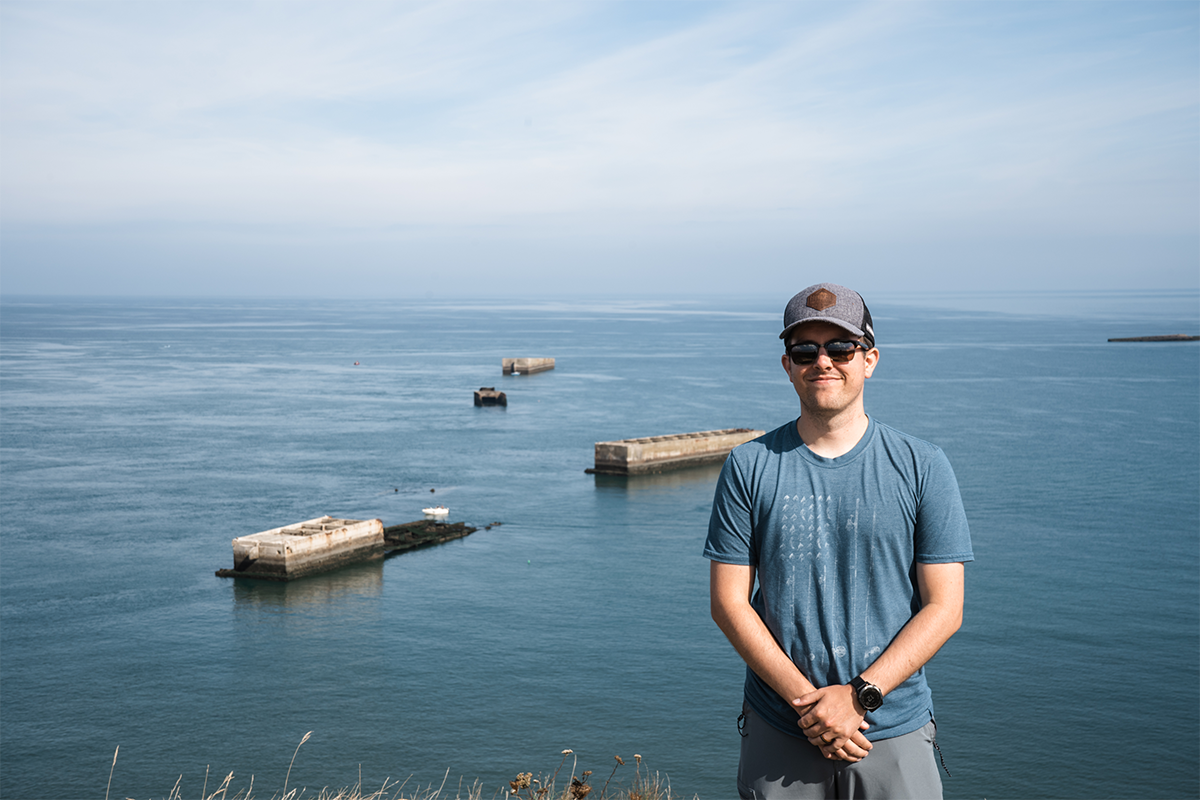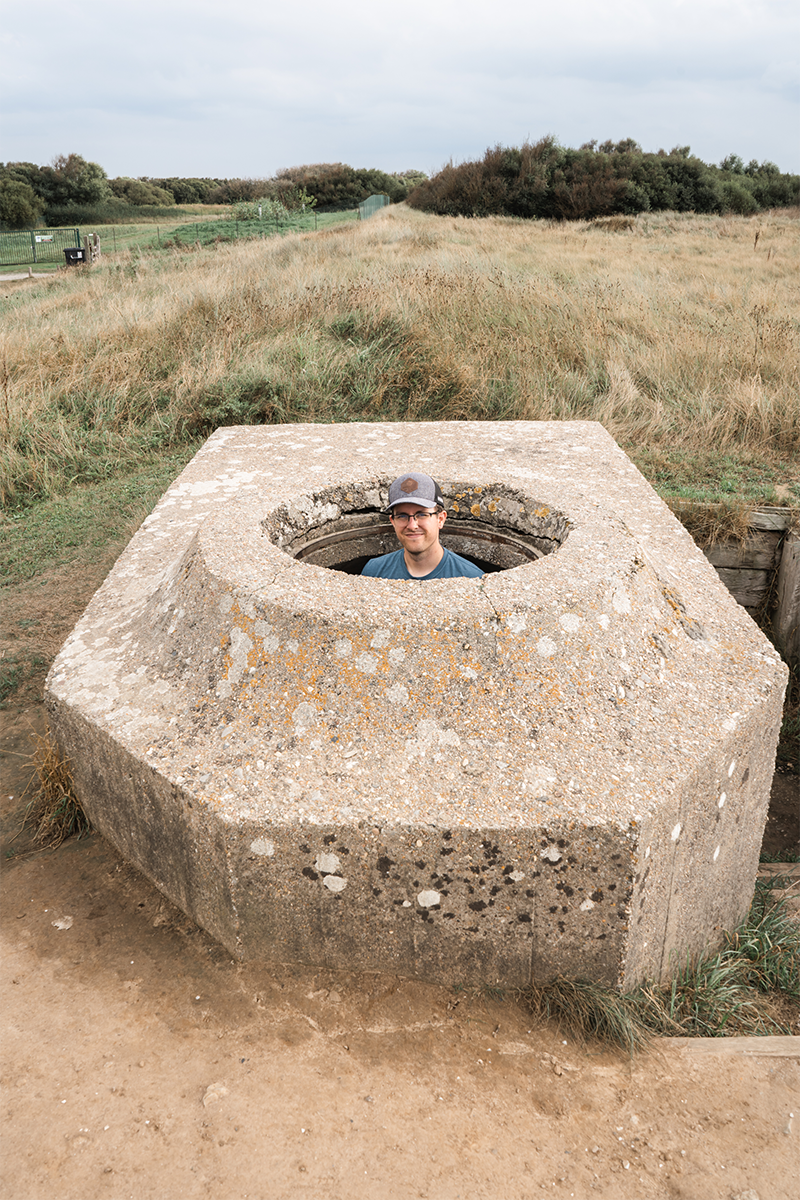Week 48-49: France
September is our anniversary month. It is the month we started dating and the month we got married. For our 9-year dating anniversary and our 4-year wedding anniversary, we took a trip to France!
Keep scrolling to see what we did each day and to watch the 3 videos I put together!
September 15
Eric was in England for a work trip the days prior to our departure, so on the 15th we met up in Munich. We spent the night at the Munich Hilton Airport Hotel because we had an early flight the next morning.
September 16
We woke up, landed in Paris around 9am and set out for Normandy. We arrived at Étretat just before noon. The parking lot was completely full, but just as we pulled in, the #1 front row parking spot became available. Happy anniversary to us!!
Étretat is a seaside town sitting on the north western coast of France. It is known for the enchanting cliff formations and the famous French impressionist painter that painted them–Claude Monet. In 1885, Monet made nearly fifty paintings of the Normandy coast which generated a lot of tourism for this area.
THE CLIFFS AT ÉTRETAT, 1885, CLAUDE MONET
Our visit to Étretat was on a clear blue sky day. Seagulls squawking and waves washing up and down the pebble beach, creating a loud clashing noise.
The town sits between two cliffs, so we decided to start our ascent up the left side first.
View from the left cliff.
Me on the cliff
Eric on the cliff
These cliffs go as far as the eyes can see.
During low-tide you can explore the caves! We timed it perfectly to where we could go inside the caves and admire the cliffs from below… and capture this cool silhouetted picture.
Eric and I in the cave at low-tide.
“The Needle”
By now, it was about 3pm and we were ready for lunch. We walked through the town and found a place that had a vegan option-La grignotte.
After lunch, we went up the right side cliff. After a steep, 10-minute ascent, we made it to the top. This side offered a field of friendly cows and equally stunning views of the cliffs and ocean.
View from the right cliffs
The Chapelle Notre Dame de la Garde is a chapel on the cliff that served as an honor for the sailors and fishermen who stayed at sea.
Chapelle Notre Dame de la Garde
The construction of the chapel took place on the August 6, 1856. During WWII, the chapel was destroyed by German occupation forces, but rebuilt after the end of the war.
Behind the chapel is a monument made in memory of the first two aviators who attempted to fly directly from France to New York. The aviators were last seen in Étretat.
The Aviator monument
By 5pm, we said goodbye to Étretat. I recall myself stating this is one of my favorite places in the world. We hope to return here again someday.
After a long day of traveling and adventures, we arrived in Deauville, a popular seaside resort town just an hour from Étretat. We checked-in to Villa Augeval and then walked a few blocks to the beach boardwalk. The boardwalk was lined with American flags and famous American names.
Deauville beach boardwalk
We carefully walked out onto the beach, trying not to get sand in our shoes while admiring the sunset. We capped off our night at LL Parasole enjoying delicious pizzas!
September 17
The day Eric has been looking forward to for a long time. We had a full itinerary planned to see all the WWII sites.
Juno beach It was 830am and we were the only to people around. Juno beach was the Canadian landing zone on D-day. 45,000 Canadians lost their lives during the War, 5,500 were killed during the Battle of Normandy and 359 on D-Day.
Eric walking out onto Juno Beach
Gold Beach The British 50th Infantry Division landed here. 24,970 British soldiers land on Gold Beach on June 6, 1944 at midnight.
Eric on Gold Beach
We realized we passed Sword beach, so we had to backtrack a little bit. Sword Beach was invaded by units of the British 3rd Division.
Eric with a Churchill tank at Sword Beach
Canadian Cemetery 2,048 men are laid to rest here.
Canadian Cemetery
Longues Sur Mer Gun Battery a World War II German artillery battery constructed on a 60 meter cliff overlooking the sea and formed a part of Germany's Atlantic Wall coastal fortifications. These guns fired all the way to Omaha Beach…which turns out to be a very long shot away.
One of 4 guns
Mulberry Harbour A temporary portable harbour developed by the United Kingdom during the Second World War to facilitate the rapid offloading of cargo onto the beaches.
Eric standing with what is left of Mulberry Harbour
American Cemetery 30,000 American soldiers, sailers, and airmen died in the battle to liberate Normandy.
Eric in front of a reflection pool. Had to wear a mask here even though it was all outdoors.
Omaha Beach The American landing zone. Allied planes flew at the beach instead of along the beach and missed many targets which led to to Omaha Beach being the deadliest of the five. There were 2,400 American casualties at Omaha.
Eric admiring the vastness of Omaha Beach and reflecting.
Pointe du Hoc A 35-metre cliff overlooking the English Channel. Pointe du Hoc was the location of a series of German bunkers and machine gun and artillery posts. Allied Rangers had to scale the cliffs to attack it.
Pointe du Hoc turning gold from people touching it.
Can you imagine having to scale this cliff at 1am while people are firing at you from all directions?
Utah beach
Eric in a Tobruk
Me with the Utah beach sign
Brécourt Manor Dick Winters led an assault on four German guns, located here at Brecourt Manor. The guns were in the position to fire on the American troops coming ashore at Utah Beach. The assault on the gun positions saved countless lives on the beach, and is recognized as a textbook assault on a fixed position, and is used at the U.S. military academy at West Point as a case study.
Eric looking at a map
Dick Winters Memorial
Eric with Dick Winter’s statue
Sainte-Mère-Église. The town where John Steele’s parachute got caught on the church towers. If you look to the top left of the church, you can see the recreation of a white parachute and trooper hanging.
Paratrooper memorial on the church
After a 12-hour day of WWII sight-seeing, we arrived at a 16th century French manor, Manor De Juganville. It served as a meeting and battle point (WXYZ Point) for the 101st Airborne Division. It also served as our hotel for the next two nights!
The Backyard at Manor De Jugenville
It was challenging to find vegan friendly food options, and by 8pm, most places were already closing. So for dinner, we discovered a pizza vending machine. I was hesitant, but it was delicious!
Gang of Pizza, one of three pizzas we ate on this trip
September 18
We drove to Mont Saint Michel, a tidal island home to 44 residents, including the monks and nuns that reside in the Abbey at the top.
Cars are not allowed on the island, so you have to walk 1 kilometer (a little over a half mile) from the parking lot or take a shuttle bus. We chose to walk the bridge, but then rode the shuttle back.
Eric on the road to the island.
That is me in the corner to show the scale of this place.
At low tide you can walk on the seabed. During our walk, we saw several jelly fish laying in the sand. To see Mont Saint Michel as an island surrounded by water, you have to visit at high tide. This only happens 36-48 hours after a full moon.
Jelly Fish in the sand.
On our way back to the manor, we stopped in Carentan, another WWII Site. This may just look like an ordinary road, but on June 12, 1944 you would see Dick Winters leading Easy company through the ditches on both sides to capture the intersection. Winters was shot in the foot in Carentan and received a Purple Heart. Locals were looking at us a bit crazily, because we were so interested in this street and taking pictures of it.
For dinner we ate in Sainte Mère Église at Les Délices du Cotentin, and ate pizza, again, for the 3rd time in 4 days. ha. Good thing we love pizza!
September 19
We left the manor at 5AM to drive back to Paris. Then flew to Munich. Then drove to Gmunden. Another long 12-hour travel day, but this was the trip of a lifetime!
































